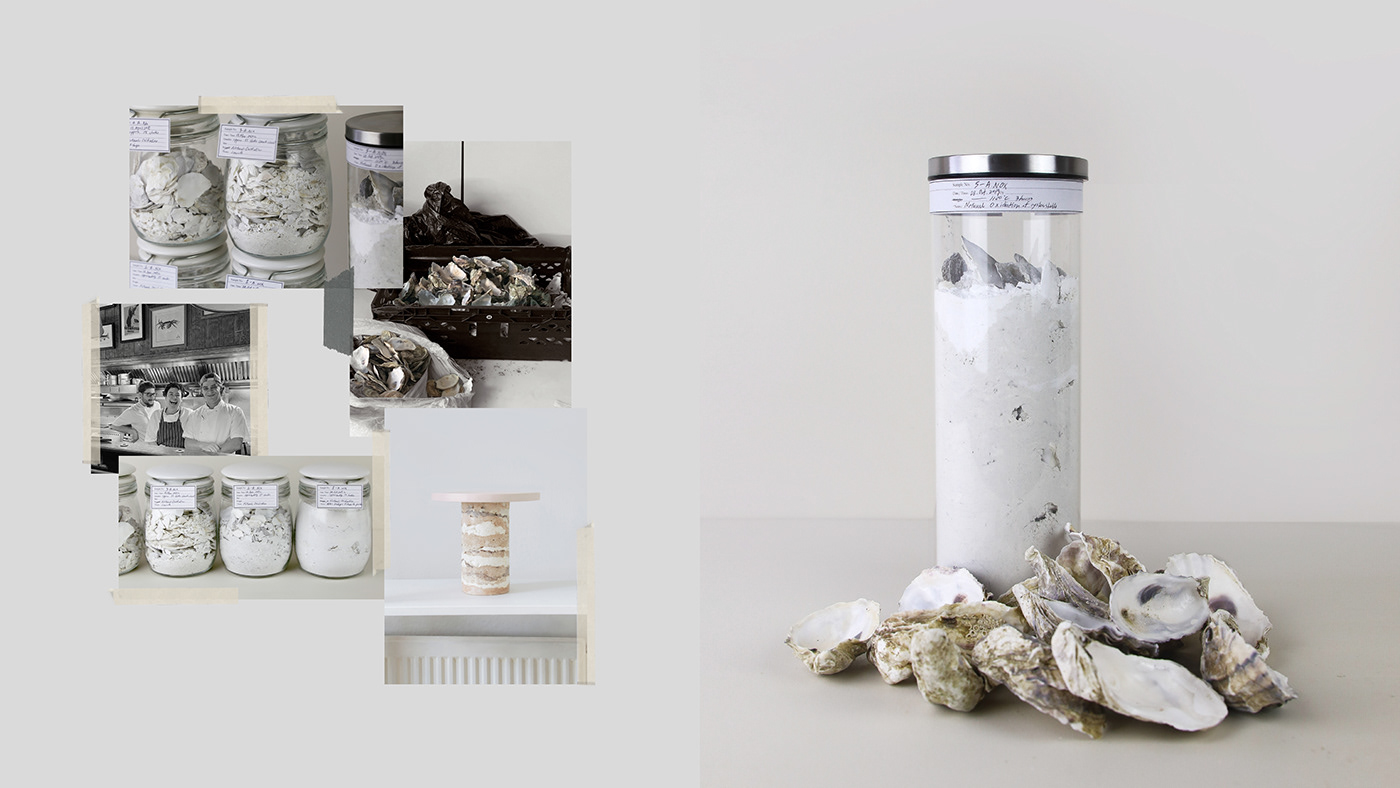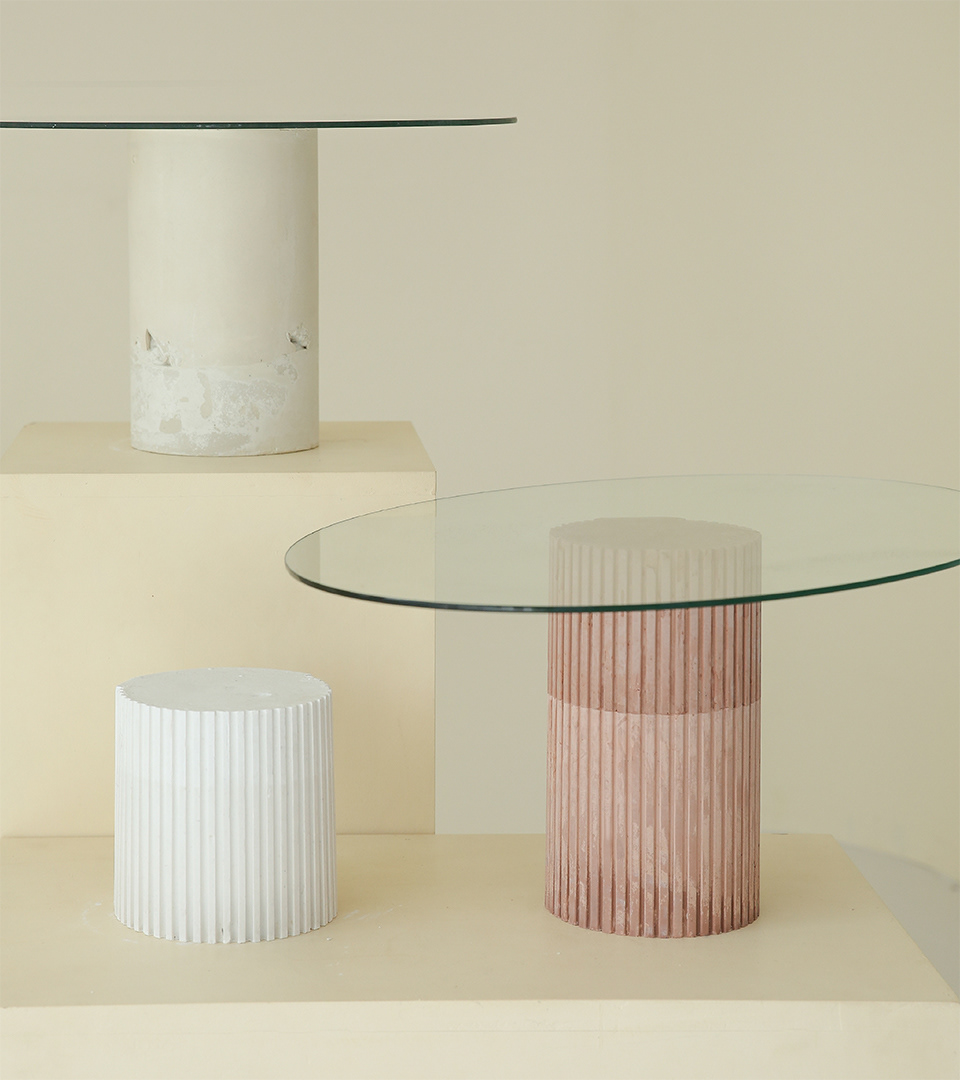An exploration
as to how waste oyster shells can be processed into contemporary furniture designs that can neutralise and regenerate acidic soils at their end of life by applying a traditional Moroccan technique called 'Tadelakt'.

According to a Nielsen report, '66% of global consumers say they’re willing to pay more for sustainable brands'. Being 100% sustainable is often still a challenge, however. Using water as an adhesive to form the material, this project demonstrates recycling of discarded oyster shells, utilising them in contemporary furniture design through natural, slow, spontaneous processes.

Mollusk industry is advocated as a highly sustainable food source and may play an important role in future. With the increasing demands worldwide, it is timely to appraise all aspects of this industry (James Morris 2018). Although seashells can be transformed into lightweight, durable and long-lasting material 7 million tons of shells are dumped in landfills or the ocean every year. The rock-state shell waste does not corrode, and over time, this waste develops very toxic gases, such as NH3 and H2S. However, only 30% of waste oyster shells are reused.


The 30% oyster shell recycling also has problems, including financial deficit because of the method’s high processing cost and its comparatively low profits. This project suggests creating fair profits by adapting new value for the material, used for high value-added industries. The contemporary design industry could be a significant part of this approach. This project’s plan to create a circular system that processes discarded oyster shells, with the cooperation of a London seafood restaurant, demonstrates the new value of wasted seashells in the high value-added design industry.
To obtain natural colour and waterproof, durable surfaces, my project adapts a traditional Moroccan technique, Tadelakt. The resulting pebble-like surface constitutes a sustainable substitute for unrecyclable cement, ceramic, and plaster. Once it is artificially, broken or sanded, exposing the unpolished inner surface to strong moisture, it begins to degrade. When it returns to nature, the material acts as a useful substance to neutralize acidified soil.
To obtain natural colour and waterproof, durable surfaces, my project adapts a traditional Moroccan technique, Tadelakt. The resulting pebble-like surface constitutes a sustainable substitute for unrecyclable cement, ceramic, and plaster. Once it is artificially, broken or sanded, exposing the unpolished inner surface to strong moisture, it begins to degrade. When it returns to nature, the material acts as a useful substance to neutralize acidified soil.




Material Science & Product Design, London, 2019- 2020
Design and Making by Seonmin Kang
Design and Making by Seonmin Kang
Photography Credit: Seonmin Kang
- Waste Oyster Shell Provider: Wright Brothers Ltd.
- Material: Waste Oyster Shells
- A Degree Project in MA Material Futures, Central Saint Martins
More about the project->
More article->
This project is recognised
‘The five highly commended graduates’ by
‘Maison/0 Green Trail 2020’ [1].
[1] ‘Maison/0 is an incubator of sustainable intelligence designed
[1] ‘Maison/0 is an incubator of sustainable intelligence designed
to provoke practices and challenge our collective futures.
Set up as part of the CSM LVMH partnership launched in May 2017,
Maison/0 provides a platform to develop innovative sustainable projects
across Central Saint Martins and LVMH.’
This project is exhibited
as a part of 'United Matters'
in Dutch Design Week 2020.



